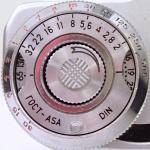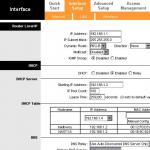Engineer for standardization and certification job description. Standardization and metrology - what kind of profession? Standardization and metrology engineer. Engineer for standardization and metrology: production and technological activities
JOB DESCRIPTION
standardization engineer
1. GENERAL PROVISIONS
1.1. This job description defines the functional duties, rights and responsibilities of a standardization engineer (hereinafter referred to as the "engineer") _______________ (hereinafter referred to as the "Organization").
1.2. An engineer is appointed to a position and dismissed from the position in accordance with the procedure established by the current labor legislation by order of the head of the Organization.
1.3. The Engineer reports directly to ____________.
1.4. The position of an engineer is assigned to a person who has the following qualifications:
Category I standardization engineer: higher professional (technical) education and work experience as a category II standardization engineer for at least 3 years.
Category II standardization engineer: higher professional (technical) education and work experience as a standardization engineer or other engineering and technical positions filled by specialists with higher professional education, at least 3 years.
Standardization engineer: higher vocational (technical) education without requirements for work experience or secondary vocational (technical) education and work experience as a standardization technician of category I for at least 3 years or other positions filled by specialists with secondary vocational education, at least 5 years.
1.5. The engineer must know:
Legislative and regulatory legal acts, methodological materials on the procedure for the development, execution, approval and implementation of standards and other documents on standardization and certification;
State system of standardization and certification of products and services;
Unified system of design preparation of production;
Unified system of technological preparation of production;
Industry standards;
The procedure for conducting normalization control, calculating the level of standardization and unification of technical documentation;
Methods for compiling terms of reference for the development of standards and other standardization documents;
The procedure for developing standards and other standardization documents;
The procedure for certification of products in the Russian Federation;
Design data of products and technology of its production;
Methodology for calculating the economic efficiency of implementing standards and carrying out activities for the certification of products and services, other standardization documents;
Advanced domestic and foreign experience in the field of standardization and certification;
Fundamentals of economics, organization of production, labor and management;
Basics of labor legislation;
Rules and norms of labor protection.
1.6. In his work, the engineer is guided by:
Regulatory acts and methodological materials on the issues of the work performed;
Internal labor regulations;
Orders and instructions of the head of the Organization and the immediate supervisor;
this job description;
Rules for labor protection, industrial sanitation and fire protection.
1.7. During the period of temporary absence of an engineer, his duties are assigned to _________________.
2. FUNCTIONAL RESPONSIBILITIES
The engineer has the following responsibilities:
Carries out mandatory normalization control of technical documentation, development of new and revision of existing standards, specifications and other documents on standardization and certification, their implementation in the Organization, works to improve the quality and competitiveness of products by standardization methods, to prepare for certification and state certification of products.
Determines for inclusion in the draft work plan for standardization, normalization and unification tasks for the introduction of new progressive standards for products and for the planned level of standardization and unification in projects developed in the Organization.
He studies the technical level of products, features of production and the results of the operation of standardized and unified products and their individual elements, participates in the examination of product designs to assess the level of their standardization and unification.
Carries out a systematic review of the standards applied in the Organization and other documents on standardization and certification in order to establish the compliance of the indicators and norms given in them with the modern level of development of science and technology, the requirements of the domestic market, export requirements, etc.
Prepares proposals on changes to standards and other standardization documents, on changes to the technical documentation and technological processes of certified products approved by the Organization, as well as proposals sent to the appropriate base (head) standardization organization, on the need to revise or cancel obsolete centrally developed standards, to improve the forms, methods and systems of standardization.
Draws up technical specifications for the preparation of draft standards, calculates the economic efficiency of standardization work.
Controls the performance of work on standardization by the divisions of the Organization, provides them with methodological assistance in the development and application of standards and other documents on standardization and certification.
Prepares conclusions on draft regulatory and technical documentation received for review from third-party organizations.
It studies and systematizes advanced domestic and foreign experience in the field of standardization and certification, as well as standards (recommendations) of international organizations.
Participates in the promotion of standardization and the exchange of experience in the development and application of standards, the organization of exhibitions, seminars, conferences on standardization and certification.
Prepares information materials on standards and other standardization and certification documents developed in the Organization, as well as reports on the implementation of standardization work, including the implementation of standards and preparation for certification of products and services, for submission to the industry body of scientific and technical information.
3. RIGHTS
The engineer has the right:
3.1. Require the management of the Organization to assist in the performance of their duties.
3.2. Improve your skills.
3.3. Get acquainted with the draft decisions of the management of the Organization relating to its activities.
3.4. Submit proposals on the issues of their activities for consideration by their immediate supervisor.
3.5. Receive from the employees of the Organization the information necessary for the implementation of their activities.
4. RESPONSIBILITY
The engineer is responsible for:
4.1. For failure to perform or improper performance of their duties stipulated by this job description - in accordance with the current labor legislation.
4.2. For offenses committed during the period of its activities - in accordance with the current civil, administrative and criminal legislation.
4.3. For causing material damage - in accordance with applicable law.
5. WORKING CONDITIONS
5.1. The engineer's work schedule is determined in accordance with the internal labor regulations established by the Organization.
5.2. In connection with the production need, the engineer is obliged to go on business trips (including local ones).
6. RIGHT OF SIGNATURE
6.1. To ensure his activities, the engineer is given the right to sign information and reference materials and documents on issues that are part of his functional duties.
_____________________________ _____________ ____________________ (position of the person who prepared (signature) (full name) instruction)
"___"__________ ___ G.
AGREED:
Legal Counsel ____________ ___________________ (signature) (full name)
"___"__________ ___ G.
Acquainted with the instruction: ____________ ____________________ (signature) (full name)
EKSD 2018. Edition dated April 9, 2018
To search for approved professional standards of the Ministry of Labor of the Russian Federation, use reference book of professional standards
Standardization Engineer
Job responsibilities. Carries out mandatory normalization control of technical documentation, development of new and revision of existing standards, specifications and other documents on standardization and certification, their implementation at the enterprise, works to improve the quality and competitiveness of products by standardization methods, to prepare for certification and state certification of products. Determines for inclusion in the draft work plan for standardization, normalization and unification tasks for the introduction of new progressive standards for products and for the planned level of standardization and unification in projects developed at enterprises. He studies the technical level of products, features of production and the results of the operation of standardized and unified products and their individual elements, participates in the examination of product designs to assess the level of their standardization and unification. Carries out a systematic check of the standards applied at the enterprise and other documents on standardization and certification in order to establish the compliance of the indicators and norms given in them with the modern level of development of science and technology, the requirements of the domestic market, export requirements, etc. Prepares proposals on changes to standards and other standardization documents, on changes made to the technical documentation and technological processes of certified products approved at the enterprise, as well as proposals sent to the appropriate base (head) standardization organization, on the need to revise or cancel obsolete centrally developed standards, to improve the forms, methods and systems of standardization. Draws up technical specifications for the preparation of draft standards, calculates the economic efficiency of standardization work. Controls the performance of work on standardization by the divisions of the enterprise, provides them with methodological assistance in the development and application of standards and other documents on standardization and certification. Prepares conclusions on draft regulatory and technical documentation received for review from third-party organizations. It studies and systematizes advanced domestic and foreign experience in the field of standardization and certification, as well as standards (recommendations) of international organizations. Participates in the promotion of standardization and the exchange of experience in the development and application of standards, the organization of exhibitions, seminars, conferences on standardization and certification. Prepares for submission to the branch body of scientific and technical information information materials on standards and other documents on standardization and certification developed at the enterprise, as well as reports on the implementation of standardization work, including the implementation of standards and preparation for certification of products and services.
Must know: legislative and regulatory legal acts, methodological materials on the procedure for the development, execution, approval and implementation of standards and other documents on standardization and certification, the state system for standardization and certification of products and services, the Unified system for design preparation for production, the Unified system for technological preparation for production, industry standards, the procedure for conducting normalization control, calculating the level of standardization and unification of technical documentation, methods for compiling technical specifications for the development of standards and other standardization documents, the procedure for developing standards and other standardization documents, the procedure for certification of products in the Russian Federation, the design data of products and their technology production, the methodology for calculating the economic efficiency of the implementation of standards and activities for the certification of products and services, other standardization documents, advanced domestic and foreign experience in the field of standardization and certification, basics of economics, organization of production, labor and management, basics of labor legislation, rules and norms of labor protection.
Qualification requirements.
Category I standardization engineer: higher professional (technical) education and work experience as a category II standardization engineer for at least 3 years.
Category II standardization engineer: higher professional (technical) education and work experience as a standardization engineer or other engineering and technical positions filled by specialists with higher professional education, at least 3 years.
Standardization engineer: higher vocational (technical) education without requirements for work experience or secondary vocational (technical) education and work experience as a standardization technician of category I for at least 3 years or other positions filled by specialists with secondary vocational education, at least 5 years.
Jobs for the position of Standardization Engineer according to the all-Russian database of vacancies
APPROVE
CEO
Fund for Infrastructure and Educational Programs (RUSNANO)
A. G. Svinarenko
JOB DESCRIPTION
standardization engineer
Subdivisions "Reporting technologies"
1. General Provisions
1.1. This job description defines the functional, job duties, rights and responsibilities of the standardization engineer of the Reporting Technologies division (hereinafter referred to as the Standardization Engineer) of the Fund for Infrastructure and Educational Programs (RUSNANO) (hereinafter the Institution).
1.2. A person who satisfies the following education and training requirements is appointed to the position of standardization engineer:
with practical experience:
Special conditions for admission to the work of a standardization engineer:
1.3. The standardization engineer must know:
1.4. The standardization engineer must be able to:
1.5. The standardization engineer is appointed to the position and dismissed by the order of the Director General of the Institution in accordance with the current legislation of the Russian Federation.
1.6. The Standardization Engineer reports to the General Director of the Institution and the Head of the Reporting Technologies Department
2. Labor functions
3. Job responsibilities
4.2. Improve qualifications, undergo retraining (retraining).
4.3. Enter into relationships with departments of third-party institutions and organizations to resolve issues that are within the competence of the standardization engineer.
4.4. Participate in the discussion of issues that are part of his functional duties.
4.5. Make suggestions and comments on the improvement of activities in the assigned area of work.
4.6. Apply to the relevant local authorities or to the court to resolve disputes arising in the performance of functional duties.
4.7. Use information materials and legal documents necessary for the performance of their duties.
4.8. Pass certification in the prescribed manner.
5. Responsibility
The standardization engineer is responsible for:
5.1. Failure to perform (improper performance) of their functional duties.
5.2. Failure to comply with the orders and instructions of the General Director of the Institution.
5.3. Inaccurate information about the status of the execution of assigned tasks and instructions, violation of the deadlines for their execution.
5.4. Violation of the internal labor regulations, fire safety and safety regulations established in the Establishment.
5.5. Causing material damage within the limits established by the current legislation of the Russian Federation.
5.6. Disclosure of information that became known in connection with the performance of official duties.
For the above violations, a standardization engineer can be brought to disciplinary, material, administrative, civil and criminal liability in accordance with applicable law, depending on the severity of the misconduct.
This job description was developed in accordance with the provisions (requirements) of the Labor Code of the Russian Federation of December 30, 2001 No. 197 FZ (Labor Code of the Russian Federation) (as amended and supplemented), the professional standard "Specialist in ensuring integrated control of the production of nanostructured composite materials" approved by order Ministry of Labor and Social Protection of the Russian Federation dated September 7, 2015 No. 589n and other regulatory legal acts regulating labor relations.
1. GENERAL PROVISIONS
1.1. This job description (hereinafter referred to as the instruction) defines the functional duties, rights and responsibilities of a standardization engineer.
1.2. The instruction was developed on the basis of the Handbook of Qualification Characteristics of Employees' Professions - Issue 1. Professions of employees that are common to all types of economic activity, approved by order of the Ministry of Labor of Ukraine dated February 16, 1998, as amended by the Ministry of Labor of Ukraine on February 26, 1999, April 15, 1999, December 10, 1999, 02/14/2000, 05/23/2000, 12/12/2000, taking into account the requirements of the Law of Ukraine "On Labor Protection" (new version of November 21, 2002 No. 229-IV), according to Article 13 of which duties on labor protection issues must be defined in job descriptions, the rights and responsibility of officials for the performance of the functions assigned to them.
1.3. The standardization engineer is appointed to the position and dismissed from the position in accordance with the procedure established by the current labor legislation by order of the director.
1.4. The standardization engineer reports directly to the head of the standardization department.
1.5. Qualification requirements.
Lead Standardization Engineer: complete higher education in the relevant area of training (master, specialist) and advanced training. At least 2 years of work experience as a standardization engineer of the 1st category.
Standardization engineer of the 1st category: complete or basic higher education in the relevant field of study (master, specialist or bachelor) and advanced training; for a master's degree - no requirements for work experience; for a specialist - at least 2 years of work experience as a standardization engineer of the 2nd category, for a bachelor - at least 3 years.
Standardization engineer II category: complete or basic higher education in the relevant field of study (specialist or bachelor) and advanced training; for a specialist - no requirements for work experience, for a bachelor - at least 2 years of work experience as a standardization engineer.
Standardization Engineer: complete or basic higher education in the relevant field of study (specialist or bachelor) without requirements for work experience.
1.6. The standardization engineer must know:
1.6.1. Decrees, orders, orders, methodological, normative and other guidance materials on standardization.
1.6.2. State standardization system.
1.6.3. Organization of design and technological preparation of production.
1.6.4. State, industry and enterprise standards.
1.6.5. The procedure for conducting normalization control, calculating the level of standardization and unification of technical documentation.
1.6.6. The procedure for drawing up technical specifications for the development of standards and other standardization documents.
1.6.7. Technical characteristics of products manufactured by the enterprise, and the technology of its production.
1.6.8. Methodology for calculating the economic efficiency of the implementation of standards and specifications.
1.6.9. Advanced domestic and world experience in the field of standardization.
1.6.10. Fundamentals of economics, labor organization, production and management.
1.6.11. Fundamentals of labor legislation.
1.6.12. Rules and norms of labor protection.
2. FUNCTIONAL RESPONSIBILITIES
2.1. The functional responsibilities of a standardization engineer are determined on the basis of the qualification characteristics of this position.
2.2. Standardization Engineer:
2.2.1. Carries out the development of new and revision of existing standards, specifications and other standardization documents, takes part in their approval, as well as the mandatory normalization control of technical documentation.
2.2.2. Determines for inclusion in the draft plan the tasks for the introduction of new progressive standards for manufactured products.
2.2.3. He studies the technical level of products manufactured by the enterprise, and the results of the operation of standardized and unified parts and individual elements, takes part in the examination of product designs to assess the level of their standardization and unification.
2.2.4. Carries out a systematic check of the application of standards, specifications and other standardization documents at the enterprise in order to ensure that their indicators comply with the current level of development of science and technology, market needs, export requirements, etc.
2.2.5. Prepares proposals on the need to make changes to the standards and specifications approved at the enterprise, as well as recommendations that are sent to the appropriate basic (main) standardization organization, on the need to revise or cancel obsolete standardization documents, introduce progressive forms, methods and standardization systems.
2.2.6. Draws up technical tasks for the preparation of draft standards, determines the economic efficiency of standardization work.
2.2.7. Participates in the implementation of approved standards, specifications and other standardization documents at the enterprise, in the development of measures to improve product quality, as well as in preparing it for certification by quality categories.
2.2.8. Controls the performance of work on standardization by the divisions of the enterprise, provides them with methodological assistance in the development and application of standards, specifications and other standardization documents.
2.2.9. Prepares conclusions on draft regulatory and technical documentation received in response to third-party organizations.
2.2.10. It studies and systematizes advanced domestic and world experience in the field of standardization, as well as standards (recommendations) of international organizations.
2.2.11. Participates in the exchange of experience in the development and application of standards, organization of exhibitions, seminars, conferences on standardization.
2.2.12. Prepares for submission to the branch body of scientific and technical information materials on the standards developed at the enterprise, as well as reports on the implementation of standardization work, including the implementation of standards.
2.2.13. Together with the labor protection service, it develops (revises) thematic plans for standardization in the field of labor protection, the content of which, first of all, should be aimed at implementing measures to:
a) reducing the level of industrial noise and vibration;
b) mechanization and automation of labor-intensive and manual labor;
c) ensuring explosion safety;
d) improving the safety of hazardous technological processes, works and equipment;
e) creation of safe and healthy working conditions.
2.2.14. Conducts engineering and technical expertise of documents on standardization in the field of labor protection.
2.2.15. Together with the labor protection service, it controls the availability, correctness and sufficiency of labor protection, fire safety and industrial sanitation requirements in the technical and technological documentation for products, components, equipment, tools, devices, protective equipment, technological processes.
2.2.16. Takes part in the work of the commission for the commissioning of completed construction projects.
2.2.17. Together with the labor protection service, it organizes promotion of standardization in the field of labor protection by holding or participating in competitions, inspections, thematic exhibitions, conferences, seminars, meetings, etc.
2.2.18. It studies the needs and provides the structural divisions of the enterprise with standards on labor protection, industrial sanitation and fire safety.
2.2.19. Takes part in the development of a plan of comprehensive measures to improve working conditions and safety in the collective agreement, takes part in the implementation of planned activities.
3. RIGHTS
3.1. The standardization engineer has the right to:
a) carry out normalization control of technical documentation;
b) take part in the development of plans for research and development work;
c) monitor compliance with the requirements of labor protection, fire safety and industrial sanitation in standards, specifications and other standardization documents developed at the enterprise.
4. RESPONSIBILITY
4.1. Responsible for the fulfillment of the duties assigned to him by this instruction.
4.2. Responsible for conducting normalization control of technical and technological documentation at the enterprise.
4.3. For violation of the internal labor regulations, fire safety rules, labor protection requirements during the performance of work, failure to fulfill their duties on labor protection issues, they may be subject to disciplinary, administrative, financial, criminal liability in accordance with the current legislation of Ukraine.
5. RELATIONSHIPS
5.1. Directly reports to the head of the technical control department.
5.2. Supervises subordinate staff.
5.3. Provides structural subdivisions of the enterprise with methodological assistance in the development and application of standards, specifications and other standardization documents.
5.4. Communicates with technical committees for standardization, Gosstandart of Ukraine, enterprises and organizations that distribute standardization documents.
5.5. Communicates with the department of labor protection, heads of structural divisions on the formation of plans for standardization in structural divisions.
AGREED:
Head (specialist) of the labor protection service of the enterprise
legal adviser
Received job description
The constant companion of technological progress is standardization and metrology. What kind of profession allows a person to learn these concepts and successfully implement them in
Many universities located throughout the country offer applicants to master the specialty of an engineer in standardization and metrology. Description of job responsibilities, specific features and "pitfalls" of the profession will be given in this article.
Standardization and metrology: what kind of profession?
This is the name of a specialty, having mastered which, a person can perform the duties of controlling the operating conditions of production equipment, as well as developing and fixing in standards rules that help save resources and maintain the safety of the production process.
Standards and standardization
The standard can be safely called one of the basic conditions necessary for the functioning of any society. It exists in almost every area of production and trade relations: from the extraction of raw materials to the organization of the process of selling the finished product. The most important standards are for science, medicine, economics, construction and industry.
The value of standardization on an international scale is extremely high. Along with metrology and certification, it is inseparable from the process of globalization and urbanization. This is explained by the fact that the implementation of trade between different countries requires the compliance of products manufactured in a particular state with international norms and standards.
The science of standardization is engaged in the study, analysis, generalization and formulation of the laws of production processes. The goal of these actions is to achieve the highest possible efficiency and optimal flow of technological processes.
What is "metrology" and "certification"
Metrology is a science that studies the unity that ensures their unity, as well as the means that contribute to achieving their maximum accuracy. Metrological standards are used in their practice by many specialists to obtain quantitative parameters of the objects under study with a given accuracy.
The adopted measurement system is absolutely necessary for all technical industries, since it is used to determine technological processes, their management and control of the quality characteristics of the finished product.
Comparison of product parameters (goods or services) with existing standards and regulations is called certification. It is introduced to protect consumers from low-quality products.
Who is involved in metrology and certification
The staffing of many enterprises includes the position of a standardization and metrology engineer. A person can begin to perform labor duties after studying at a higher educational institution.
Standardization and metrology: what kind of profession and what do such specialists do? They develop and apply regulatory, technical and methodological documents based on the State Standardization System. Their work helps to develop the national economy, improve production efficiency, product quality and, as a result, the living standards of the population.

Where can you learn this profession?
"Standardization and Metrology" is a specialty in which university students receive a set of knowledge and practical skills to perform the labor functions of an engineer in an enterprise or organization. Such specialists are invited to work in companies of various industries and services:
- Customs and tax inspection.
- Test laboratories.
- Centers for standardization, metrology and certification.
- Companies that control the quality of products (trade inspection, sanitary and epidemiological supervision).
- Organizations specializing in the introduction of new types of products.
- Patent offices.
- Manufacturing enterprises.
You can learn this profession in many educational institutions in Moscow and other cities, they work according to a program that includes standardization, metrology (technical universities: Bauman Moscow State Technical University and others). After receiving a diploma, you can count on enrolling in the state of enterprises that work in the fields of mechanical engineering, chemical, pulp and paper and

You can start looking for answers to the questions facing the students of the Faculty of Standardization and Metrology (who to work and where to get a job) already in the process of attending the last courses. In most cases, they have the opportunity to combine education with work in their specialty.

Qualities of a standardization and metrology engineer
When deciding to work in this area, a person should compare his character traits and abilities with a list of qualities that a competent engineer should have:
- Ability to exact and careful calculations.
- Having ingenuity.
- Ability to demonstrate technical creativity and innovation.
- Developed logical thinking.
- Possession of a broad outlook.
- A mindset that can be described as analytical.
- Independent and original thinking.
- The ability to realistically assess the situation.
- Ability to clearly follow instructions and maintain work discipline.
You should think about the correspondence of your character and temperament to the chosen profession even before entering the faculty of standardization and metrology.
Prospects for the profession
The career of specialists in this area can develop in accordance with a variety of scenarios: they have the opportunity to conduct teaching activities, work abroad or in customs authorities. In addition, enterprises of the oil-extracting and oil-processing industry cannot do without graduates of the Faculty of Standardization and Metrology. Whom to work, the specialist decides.

Among the most popular positions are the controller and manager of standardization and certification, auditor, metrologist and appraiser. A separate place in this list is occupied by the CSM engineer. This organization provides a range of specific services to a variety of customers. Work in the CSM is often associated with testing products, issuing certificates and other documents.
Engineer for standardization and metrology: production and technological activities
The professional duties of this specialist include the performance of a fairly large number of functions. They can be divided into the following categories:

Responsibilities that relate to production and technical are that the specialist develops and implements measures designed to improve product quality. He also improves existing standards and develops new ones, checks the conformity of product certificates, studies and improves the level of measurement accuracy and the reliability of control measures.
Other functions of a standardization and metrology engineer
As part of organizational and managerial activities, this specialist performs the following types of work:

Speaking about the research functions of standardization and metrology engineers, they mean the need to plan measures for measuring, testing and controlling the quality of a product.
Also, these professionals are engaged in the creation of various theoretical models, on which the study of the qualitative characteristics of the product is based and the technological processes are analyzed.
The activities of engineers related to the design include the development of design and technical documentation, the creation of new methods for quality management (or improvement of those used), the selection of optimal solutions to problems, the preparation of specific documents (technical specifications, standards, methods, instructions).
From the above list of duties, it becomes obvious the high level of responsibility that the specialty "Standardization and Metrology" imposes on the employee. What kind of profession, it is better to find out even before entering, as it requires considerable patience, endurance and intelligence.
Advantages and disadvantages of the specialty
When deciding to join the ranks of standardization and metrology engineers, one should take into account the existence of positive and negative aspects of this position.
The undoubted advantage that "Standardization and Metrology" (specialty) has is the opportunity to get a job in an interesting industrial or scientific field. After all, these specialists are in demand wherever measuring equipment is used. including the international labor market.
True, the presence of harmful factors, such as difficult working conditions, fumes, noise, and others, is part of the working days of graduates of the Faculty of Standardization and Metrology.
What kind of profession, what its specifics and features are weighed by the applicant himself, since only he is responsible for building his future.





